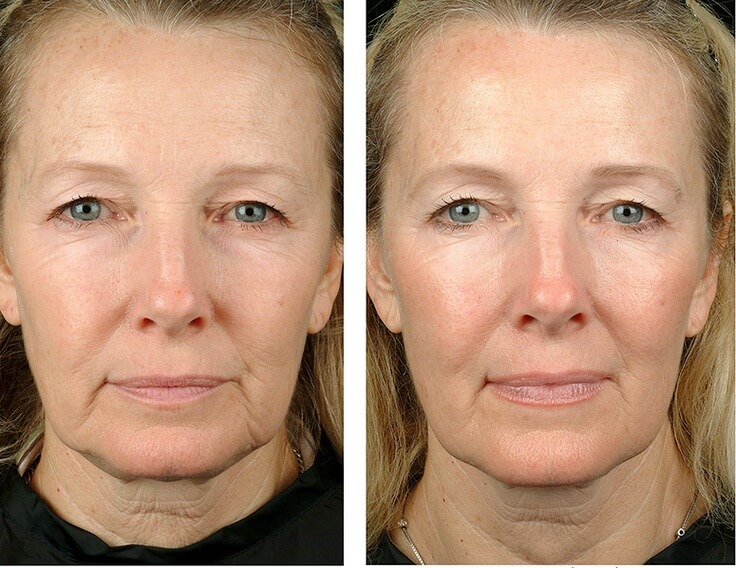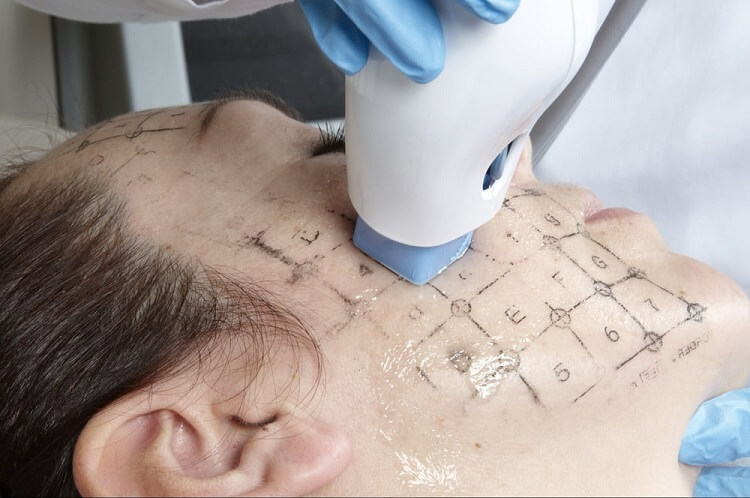A safe, non-invasive cosmetic procedure, thermage delivers natural-looking results with limited down time. The treatment can be performed on all skin types as well as on the face and on other parts of the body. Its versatility and nature make it an effective option for many individuals. However, understanding exactly what is thermage and how it works is important to determine if the treatment is right for you.
What Is Thermage?

Thermage is a prove treatment option that uses radiofrequency to rejuvenate the skin below the surface. It effectively treats a range of skin imperfections that are a result of age and/or environmental factors. The treatment can be used to achieve smoother and more even skin as well as to tone and tighten unwanted bulges and dimples. The radiofrequency used with thermage acts to remodel the collagen beneath your skin – giving you the smooth feel and youthful appearance everyone wants. This treatment targets specific problem areas, so the results are both focused and effective.
What Happens During the Procedure?
Length of Time
Understanding the actual process of treatment is also important for answering the question of what is thermage. The procedure should be performed by a certified physician. Most treatments take an average of 45 minutes for the face but can be as much as 90 minutes for other areas of the body, depending on the size, location, and general condition of the treatment area.
Skin Preparation
Unlike surgery, there is no preparation required prior to the procedure. You will not be required to fast or have any blood work or medical workup before thermage. Likewise, there is no special after treatment care necessary, aside from a basic daily skincare regimen and sunscreen as a component of protecting your skin.
To perform the treatment, your physician will prep the area to be treated. This typically involves cleaning the area with alcohol to remove any makeup, dirt, or oils on the skin. Once the skin is cleaned, the physician will apply temporary grid onto the treatment area. This grid serves as a guide so that the physician avoids any overlapping pulses.

During the Treatment
Once the area is prepped, the doctor will deliver a test pulse to determine the heat level. The treatment may be somewhat painful but should feel tolerable, and the physician should work with you to adjust the temperature to an acceptable level.
The doctor will then begin to administer the procedure. The doctor will deliver a specified number of pulses indicated by the tip being used. He or she will distribute the pulses evenly throughout the treatment area, utilizing various techniques and focusing on any specific areas that may require more attention. The physician will also constantly apply a coupling fluid to the treatment area to improve the level of frequency delivered.
Each pulse is paired with a cooling component, but most patients describe the feeling as similar to that of a drilling sensation. Discomfort is typically more pronounced in bony areas of the body. Anesthesia should not be used even as discomfort arises, as your doctor will need constant feedback from you on the heat level.
After the Procedure
After the procedure is finished, the doctor will clean your skin and remove the grid using alcohol. You may have to return for multiple sessions depending on your intended treatment areas.
Are There Any Side Effects to Thermage?
Aside from simply understanding what is thermage, it is also important to be aware of the treatment benefits and potential side effects. Individuals who undergo the treatment can expect firmer, more youthful looking skin. Many individuals notice an immediate improvement in the treatment area; however, further improvements can typically be seen in the weeks and months following the procedure.
Thermage can be utilized to treat a number of skin concerns, including:
- Skin texture;
- Jowls;
- Wrinkles;
- Scowl lines;
- Crow’s feet;
- Acne scars;
- Jawline.
Thermage targets the deep layers of the skin to stimulate the production of collagen. As such, it is often considered an effective treatment option for those individuals who do not need a full face lift or who are otherwise not good candidates for surgery.
It is important to note, though, that thermage is not without its risks. While negative reactions are rare, being aware of the potential drawbacks can help you weigh your options.
One of the most frequently reported side effects is swelling and/or redness in the treated area. This irritation typically disappears within a few hours, but in extreme cases, may last up to a few weeks. Some individuals have also reported bruising after the treatment, but this is very rare.
Additionally some tingling, soreness, and/or burning may be present after treatment. This side effect is most common along the jawline. Even rarer, some individuals may experience surface irregularity in the treatment area. This effect has been reported by less than one-tenth of a percent of patients. Nonetheless, it is important to discuss what is thermage and any potential concerns you have with your doctor.
How Much Does Thermage Cost?
The cost of thermage can vary based on a number of factors; however, the average price of a single treatment is $2,450. It is generally considered a more affordable skin rejuvenation procedure because it utilizes less expensive equipment and requires no surgical procedures or treatment.
In fact, it is much less expensive than a surgical face lift or even laser skin tightening. It is important to note, though, that thermage will provide you with more advanced results than
Price often varies based on your location, the area to be treated, and your doctor’s experience. However, you should not let cost be a deterrent to choosing a qualified, highly skilled doctor.
Final Thoughts
Thermage is a safe, effective treatment for anyone wanting lasting results. The procedure utilizes radiofrequency to stimulate collagen production and achieve the desired results and should be performed by a certified physician. Most individuals require little to no downtime and see almost instant results, with benefits increasing with time.
Side effects are uncommon and typically pass with a few hours to several days. If you want results that are more than you can get with lotions and potions but less than that of surgery, thermage is likely a good option for you.
